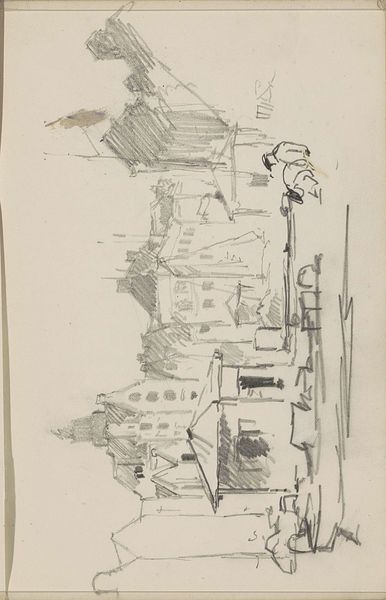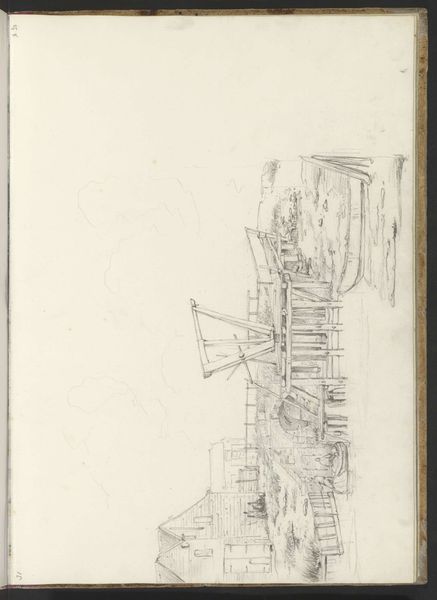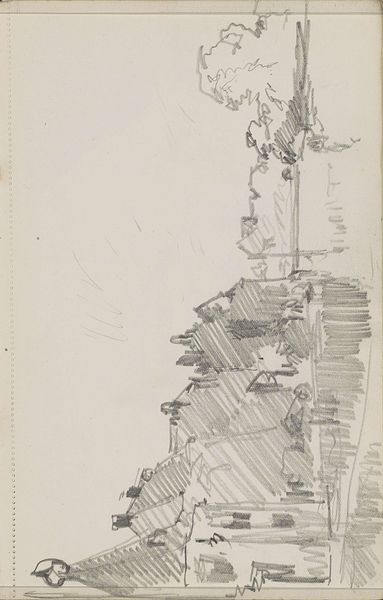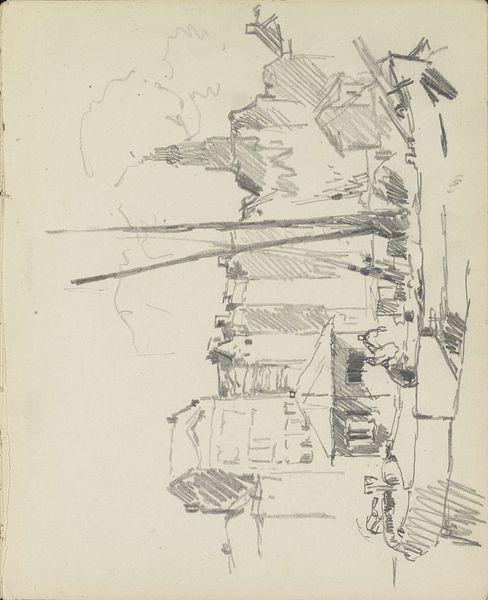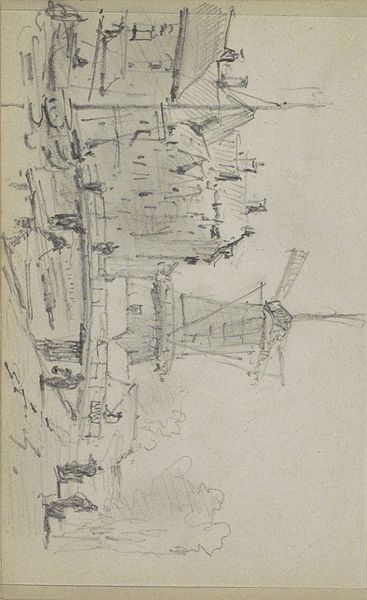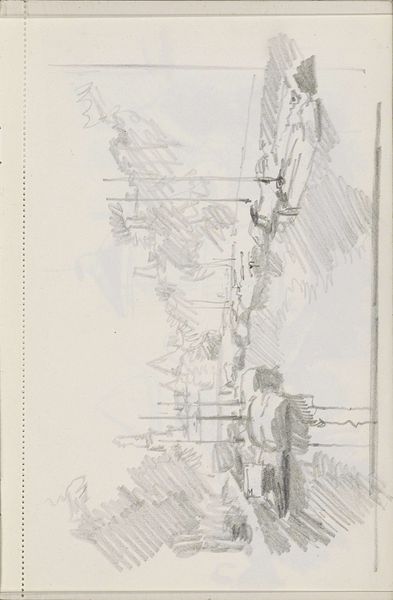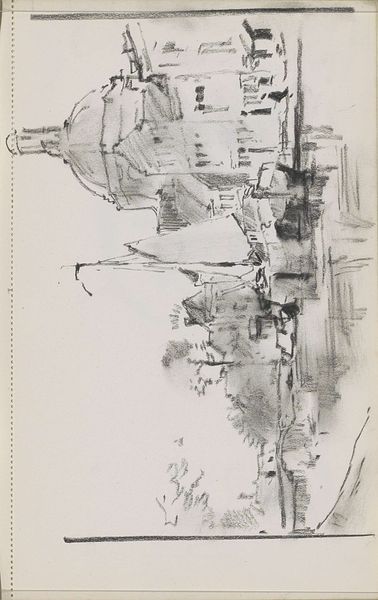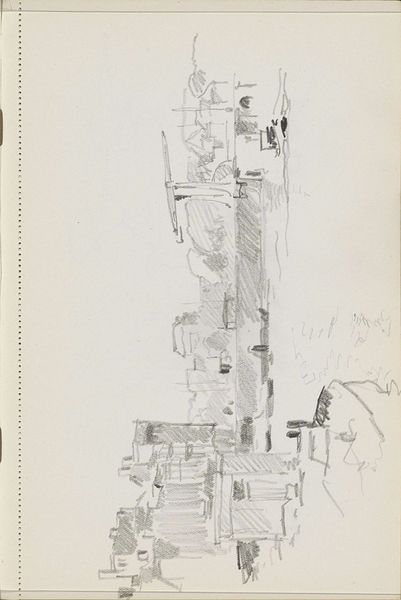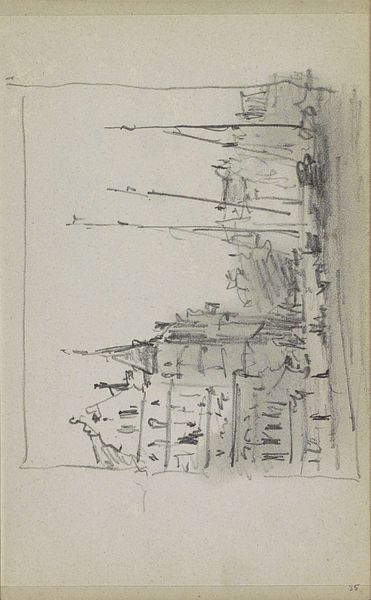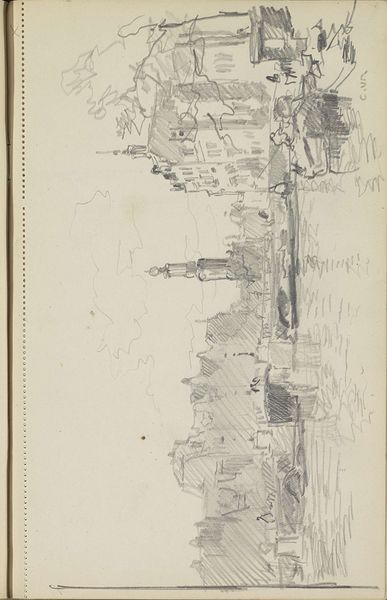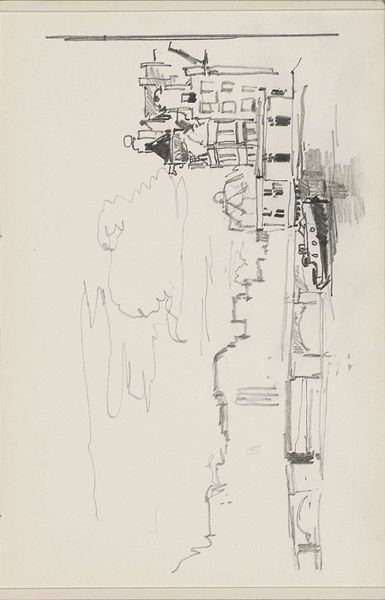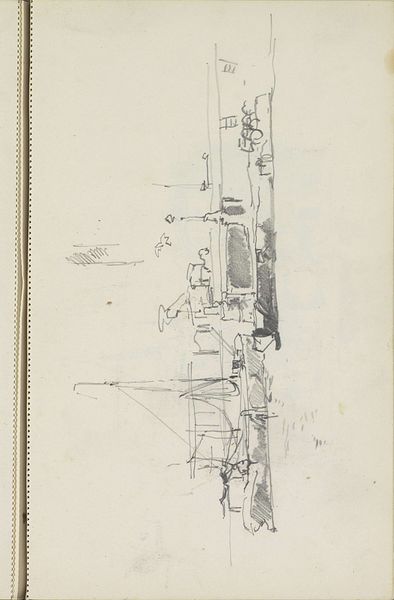
Copyright: Rijks Museum: Open Domain
Curator: We’re looking at “Boats on a Quay in Amsterdam,” a graphite and pencil drawing by Cornelis Vreedenburgh, dating from between 1890 and 1946. It’s currently held at the Rijksmuseum. Editor: My immediate impression is one of swift execution. The lines are quite raw, the composition compressed. The artist really prioritized capturing a sense of place over precise detail. Curator: It's fascinating how Vreedenburgh, working during that period, approached urban sketching. Look at the materiality – the pencil and graphite on paper become tools to explore the industrialized harbor. The visible page binding even suggests this might be from a sketchpad, highlighting the directness of artistic production outside the traditional studio. What are your thoughts on that? Editor: Absolutely. Focusing on the forms, one can almost trace the artist’s hand moving across the paper, deciding what to commit to and what to merely suggest. It’s a beautiful exercise in visual selection, a delicate dance between solid architectural shapes and ephemeral details – smokestacks, rigging, even the suggestion of people moving. The buildings feel like scaffolding for his impressions. Curator: Precisely. And thinking about Amsterdam at this time, consider the economic context and its bustling harbor; this drawing serves as a direct record of labor and trade. You can imagine dockworkers loading and unloading cargo. Editor: And formally, it's about juxtaposing sharp lines against softer, smudged shading to give form. This also plays into a game of geometric counterpoints. Look at the way horizontal boats contrast to vertical buildings; these oppositions yield dynamic rhythms that guide the eye around the piece. It is far from arbitrary. Curator: The absence of color only emphasizes the importance of line in defining spatial relationships. A conscious choice when documenting industrial activity, considering this cityscape reflects a shift from manual labor to increased automation in that era. The visible marks represent not only the scene, but also human interaction and labor involved in the depicted urban environment. Editor: True. It's as much a snapshot of Amsterdam as a window into Vreedenburgh's mind—a fleeting moment of observation distilled into graphite on paper. It captures both the essence and the ephemeral. Curator: Looking at the relationship between production and urban life then lets us consider its importance not merely aesthetically. Editor: Indeed, by isolating such components we start seeing hidden depth with pieces otherwise easy to ignore.
Comments
No comments
Be the first to comment and join the conversation on the ultimate creative platform.
